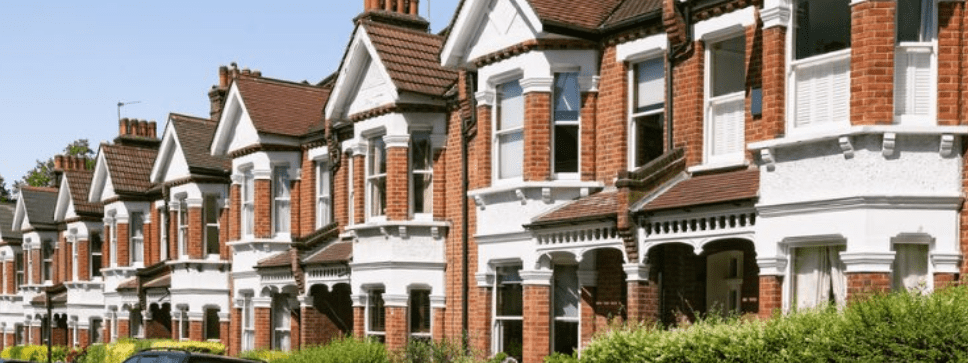By Nick Parker
On the last day of May, the ban on evictions in England, which was implemented to temporarily shield renters from the consequences of arrears caused by COVID-related loss of income, was lifted. For many households, the implications of this look severe.
The Joseph Rowntree Foundation has estimated that about 850,000 households are in housing debt, with nearly half of these already subject to an eviction notice or warning, and around 90,000 of the remainder in arrears for over four months. Research by Shelter reveals that nearly two million adults who rent privately are fearful that they will be evicted or asked to leave their home in the near future.
This is not surprising; after all, millions of people have had to absorb a 20 per cent loss of income over much of the last 15 months due to being furloughed. Others, particularly the self-employed, have struggled to obtain adequate financial support, and the well documented delays in receiving Universal Credit, once a claim has been made, will no doubt also have added to this. Thus, for a section of the 37 per cent of UK households who rent rather than own their home, the immediate future seems problematic.
While this potentially appalling situation has been caused in the first instance by the pandemic, the roots of it go far deeper. COVID-19 has exacerbated the already grim reality for many people with regards to housing. Over the last forty years, the cost of residential property has soared. In her 2020 book Generation Rent, Chloe Timperley highlights how those renting privately part with over 30 per cent of their income in rent. In London, this increases to an astonishing 60 per cent
Given that in 1980 the equivalent figures were 10 and 14 per cent of income, this represents a dizzying increase in housing costs. On average, the cost of private sector rented accommodation is twice that of social housing. This brings us nicely to the next factor in this crisis; the degradation of the social housing sector over the same forty-year period.

From 1980, the Thatcher government’s ‘Right to Buy’ policy, which compelled council houses to be sold off to their occupants at a generous discount, was a key driver in the mass transfer of public assets and public money into the grateful hands (and bank accounts) of private landlords.
As Brett Christophers observes in his work on rentier capitalism (2020), many houses sold under Right to Buy have ended up in the private rented sector. He estimates that the total discount given on the 1.9 million properties sold under the scheme since 1979 amounts to a staggering £75bn. This is by far the biggest privatization in British history.
Yet, just like before Right to Buy, many of those living in the houses are renters, only they are now paying much more for the pleasure. And, to make matters worse, the government is generously parting with more public money to enable those on lower incomes to meet these high rent payments. Back when governments facilitated mass council house building, 80 per cent of the public money spent on housing went towards…well, building houses.
Nowadays, 80 per cent of public money spent on housing, £23bn per year, goes in in housing benefit. The Exchequer is funding greedy landlords! This is a reflection of the great reduction in social houses built; just 24,000 per year over the last 30 years, compared to well over 100,000 in the post-war period.
Meanwhile, there has been next to no increase in private sector construction to compensate for this. Overall, then, the country has far less homes being built, far more of its housing stock in the hands of private landlords and has untold billions are being given in public subsidies to private individuals for this.

Successive Housing Acts throughout the 1980s and 1990s underpinned and facilitated this state of affairs. The 1988 legislation introduced fixed-term tenancies (this is where the standard six-month contract comes from) and abolished what remained of rent control. It also introduced ‘section 21’, which enabled landlords to serve eviction notices after the fixed term period is up, even without a reason.
The Act of 1996 gave a further massive boost to prospective investors in property by introducing ‘buy-to-let’ mortgages. In a context of greatly increasing inequality, these acts allowed the disparity in resources amongst the population to further skew the housing market in favour of those with greater resources. As Timperley further observes, when the market was booming, those who already owned property could release equity to obtain more.
While it was far easier for first time buyers to get a mortgage prior to the 2008 financial crisis (home ownership hit a peak of 70 per cent around 2003), they did not have access to the ‘interest-only’ mortgages that buy-to-let landlords could easily obtain, which left them with less onerous interest payments and thus more profit from rent.
Of course, to those who could afford it, buy-to-let no doubt appeared a sound investment for their later years. A common refrain to criticism of landlords and calls for action is that many of them only have a few properties and rely on them to fund retirement. In an era where final salary pension schemes have been eroded and social care for the elderly is hideously expensive, it is not surprising that people look to increase their asset ownership.
The problem is that when the number of homes being built had been reduced, this sort of behaviour has contributed to sharply increasing prices. Furthermore, while small portfolio holders account for the majority of PRS ownership, there is also a major issue with wealthy investors buying houses and leaving them empty. The problem is thus not just the lack of construction but also vacant units.
Given that much of what I have described was driven by an ideology that extolled the idea of home ownership, it is necessary to show how this is becoming an impossibility for many younger people (hence the name of Timperley’s book that I have been referring to) and thus how high rents (and in one in four PRS homes, low standards) have become a vicious cycle.
First, however, it is worth dispelling something of a myth. It is sometimes argued, not just by free market Tories but also New Labour/Blairite types, that Right to Buy and financial deregulation greatly expanded and facilitated home ownership. Those of us who argue for much more social housing are told we are living in the past and wanting to trap people in a state of dependency.

The fact is, however, that most of the expansion of home ownership in Britain went alongside the building of council houses. To draw on Timperley’s research again; just ten per cent of Britons were owners in 1900. By 1939, after numerous big slum clearances and council house programmes, this has increased to 33 per cent. It increased by around the same amount in percentage points between 1939 and 1979 – up to 55 per cent. Today, it is 63 per cent. Overall, then, home ownership has expanded at a slower rate during the great decline and sell off of social housing than during its expansion!
In regard to the younger generations, it is here that the lack of ownership is felt most acutely; in 2017 only 40 per cent of this age group had the privilege. For 35–44-year-olds, it was 52 per cent. One economist at Natwest believes that this trend will result in renters being the majority by 2025. The evidence seems clear; far from progressing towards a nation of aspirational homeowners, Britain is moving in the opposite direction.
Moving back to the precarity that many are experiencing due to COVID-19 and the end of the eviction ban, it seems clear that it flows from the inequality and exploitation that has become routine within our housing market. Even mainstream politicians and commentators are recognizing that the situation is just unacceptable; in his recently published book Go Big, Shadow Business Secretary and former Labour leader, Ed Miliband, called for much more social housing to be built.
Fundamentally, though, as long as housing is subject to the whims of capitalist logic and the market, precarity and insecurity will persist. We do indeed need to ‘Go Big’. But this should not mean trying to tame the housing market, but abolishing it.
An event last May was illustrative of how some Labour politicians are stuck in the logic of legalism and capitalist ‘realism’. During the first lockdown, over 4,000 Labour members signed a petition for the Party to pledge to cancel rent payments for tenants experiencing a drop in income due to COVID-19. This was in the face of frankly unbelievable comments by then Shadow Housing Secretary, Thangam Debbonaire.
While proposing several sensible and progressive measures such as a ban on evictions over arrears caused by the pandemic, and the outlawing of landlords being able to bankrupt tenants for non-payment of rent, Debbonaire also contended that renters should have two years to pay back arrears, and argued that cancelling rent payments was both regressive, as it would benefit those not in hardship, and arguably illegal, as contracts between tenants and landlords could not be contravened!

Another Labour MP, Clive Betts, who chairs the Housing, Communities and Local Government Select Committee, responded to a similar call by the Acorn tenant’s union by arguing that rent waivers could be deemed a breach of Article 1, Protocol 1 of the European Declaration of Human Rights, as ‘taking property away from an individual’ and was not possible except if demonstrably in the public interest.
Betts also agonised about how cancellations of rent payments could ‘significantly undermine institutional investment in the private rented sector’. These comments are instructive, because they illuminate the bind that so-called Labour politicians find themselves in when they refuse to challenge capitalist relations and the social, political and legal norms that the system imposes.
As it happens, what Betts argued is not without foundation, in that the European Court of Human Rights has ruled that rent controls in Malta are a violation of A1, P1 due to the excessive ‘control of use’ that they impose on landlords. The German courts have also recently declared rent controls in Berlin illegal. An article on the Bloomberg website echoed Mr Betts’s concerns, arguing that this act of populism has potentially dissuaded investors from providing rented accommodation in the city.
Socialists should have no truck with these arguments whatsoever. If we want to talk about human rights (which are indeed important), we should focus on the right of all to a secure and decent home. If current international norms and legal systems protect the individual rights of property owners in a manner that disadvantages a large group of people and limits their right to such a home, then we stand in steadfast opposition to such an economic and political order.
The labour movement has to commit itself to socialist housing policies in the interests of working-class people. As immediate steps to alleviate the crisis, we should fight for;
*The reinstatement of the eviction ban except for anti-social/criminal behaviour
*Legally controlled and enforceable rents; to be linked to the median wage and cost of living in specific localities.
*A mass programme of council house building, in accordance with the environmental standards necessary to achieve climate justice. Targets to be democratically defined and set according to need in each locality.
*The 25 per cent of properties in the PSR deemed ‘unfit’ to immediately be brought up to standard by developers and landlords.
*the labour movement should also campaign for the public ownership of all land, the building companies and ancillary industries, so that a plan of house-building can be developed with the cooperation of local authorities and regional and national government.



